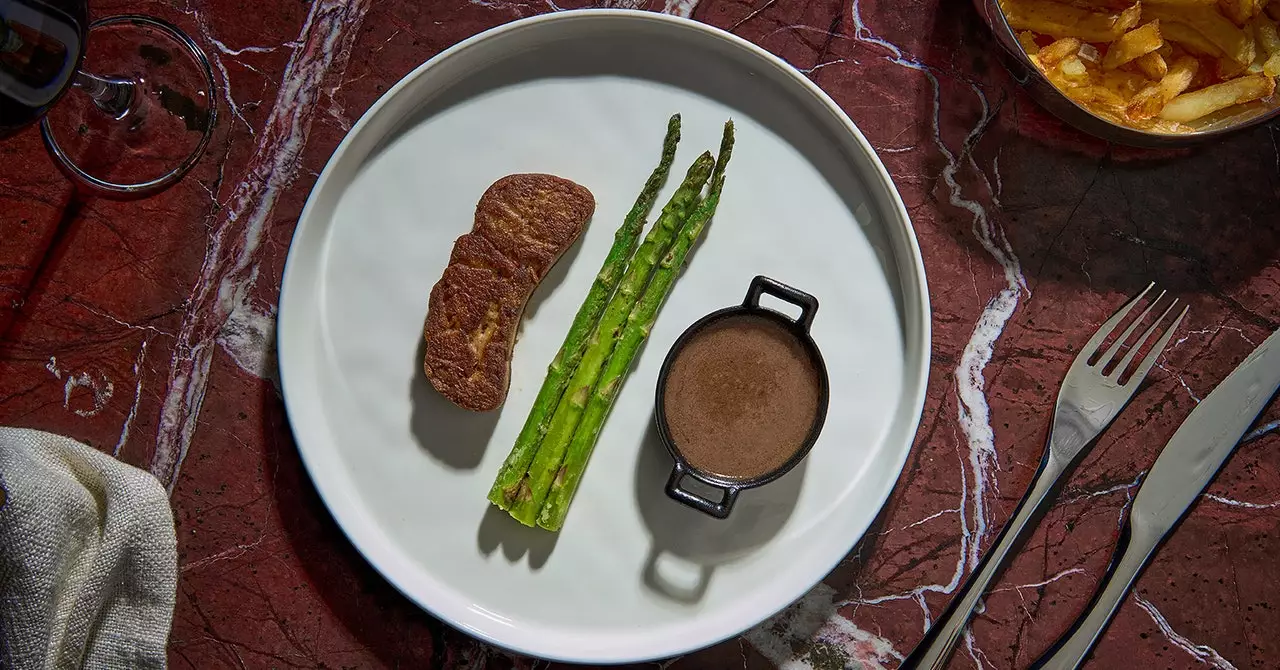In recent years, the surge of interest in lab-grown or cultivated meats signals a transformative moment in food technology. During a lavish launch event at a sushi bar in New York, a curious crossover was seen as the worlds of haute cuisine and biotechnology collided. Guests indulged in a variety of dishes—sushi rolls, peking duck tapas, and mushroom salads—woven together by a single, groundbreaking ingredient: foie gras crafted from quail cells cultivated in a bioreactor. This event, helmed by the renowned chef Masa Takayama, unveiled offerings from Vow, an Australian startup specializing in cultivated meat, which aims to introduce its extravagant foie gras to select restaurants across Singapore and Hong Kong.
The idea of cultivating meat not only terminates conventional animal farming practices but also seeks to redefine meat consumption as a luxury experience. Traditionally, the cultivated meat industry has positioned itself as a moral alternative to factory farming, promoting animal welfare and environmental sustainability. However, Vow’s approach, under the leadership of CEO George Peppou, takes a distinctly different trajectory. By pitching cultivated meat as a luxury item, they venture into a space typically dominated by gourmet food culture. “I feel like the obituary has already been written for our industry,” Peppou remarks, challenging the narrative that cultivated meat is simply an ethical response to meat production’s environmental impact.
Despite its altruistic roots, Peppou’s challenge involves showing the world that cultivated meat can be profitable and appealing to discerning consumers. With a hefty price tag still clinging to lab-grown meats compared to their conventionally farmed counterparts, the industry struggles to find traction. According to a 2021 research paper, cultivated meat production costs range dramatically, presenting investors with a daunting reality: prices, with estimates as high as $10,000 per pound, starkly contrast with the mere $2.67 per pound for factory-farmed chicken.
A principal hindrance to cultivating meat at a reasonable cost lies in its complex production process, primarily reliant on bioreactors, which were originally developed for the pharmaceutical industry. This infrastructure is designed for high-value, low-volume applications—such as the production of vaccines—rather than for mass-market food production. Consequently, the cultivated meat industry grapples with scaling up production while maintaining affordability. Peppou’s perspective, which emphasizes the flaws in prevalent strategies like focusing on chicken products, compels a rethink of the sector’s fundamentals. He argues that the emphasis on chicken might impede the industry’s innovation trajectory.
This ongoing struggle highlights an urgent need for breakthroughs not just in production technology but also in consumer education and perception. For cultivated meat to become viable in the mainstream market, public skepticism must be addressed, requiring enhanced transparency about the technology, its benefits, and its potential to create a more sustainable food system.
Peppou’s provocateur persona within this space serves to galvanize support for a market poised for explosive growth. As traditional meat producers face increasing scrutiny over environmental impact and animal welfare, cultivated meat firms like Vow could redefine what luxury means in the culinary domain. Vow’s ambition to create niche markets offering ultra-premium products—akin to fine wines or high-end chocolates—sets a tone that could resonate with affluent consumers seeking both indulgence and sustainability.
While cultivated meat holds the promise of being a transformative solution to the ethical and environmental issues inherent in meat production, it faces substantial hurdles. From skyrocketing production costs to competing with the deeply entrenched poultry and livestock industries, the quest for financial viability presents a complex yet exciting challenge. As Vow and similar companies navigate this labyrinth, their ability to captivate the luxury market could well dictate the future landscape of cultivated meat and its role in a more responsible, innovative food system. The balance of opulence and sustainability may just be the key to seizing a culinary revolution.


Leave a Reply